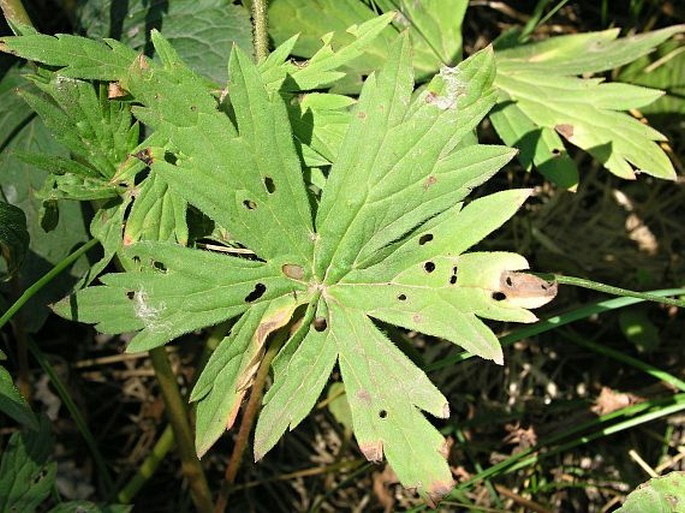Syn.: Geranium albiflorum Hook., nom. illeg., Geranium hookerianum Walp.
Family: Geraniaceae Juss.

Distribution: Species of the west of North America found in Rocky Mountains from Yukon to south of California and New Mexico and to western part of South Dakota.
Ecology: Grows in mountain meadows, forests and forest margins, on stream banks in elevations from 200 to 3600 m. Blooms from April to August.

Description: Perennial herb with underground rhizome, 30–90 cm tall; stem rising to erect, branched, hairless or hairy at base, higher up with glandular hairs, basal leaves with long stalks, 5–30 cm long and 3–15 cm wide, palmately divided into 5–7 lobes, stem leaves sessile, opposite, smaller. Flowers from axils of leaves, terminal, solitary or 2, pentamerous, calyx 6–11 mm long, petals 12–17 mm long, white or pinkish with 5–9 purple veins. Fruit is a capsule 2–2.5 cm long, splitting from bottom upward, seeds long-tailed.
Usage: The plant had been used in traditional medicine by native tribes.
Note: Specific name refers to a Scottish naturalist and physician John Richardson (1787–1865), chief naturalist to the second arctic expedition of Sir John Franklin.




These images were taken in Canada, Alberta, Calgary, Fish Creek Provincial Park, Shannon Terrace (by Karel Bergmann, July 2013) and Canada, Alberta, Waterton Lakes NP, Upper Waterton Lake (by Vít Grulich, July 31, 2007).


